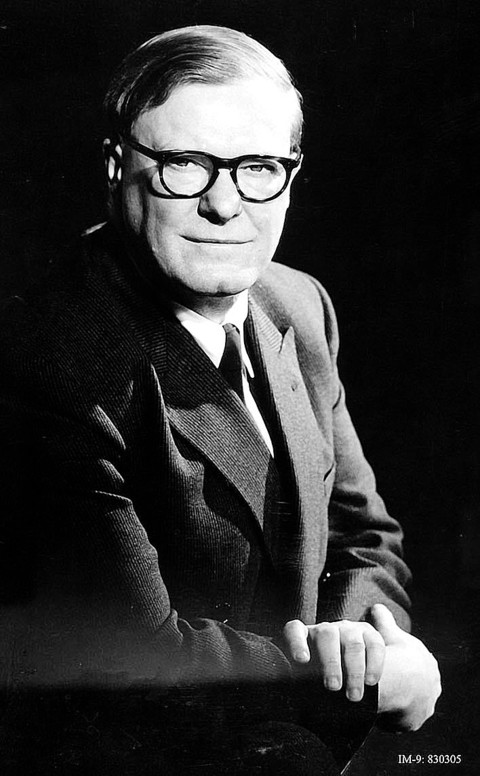William Penney (1909-1991) was a British mathematician and physicist.
William Penney’s first assignment of the war was a research position with the Royal Navy, studying collisions, explosions and shockwaves and searching for ways to use hydrodynamics to assist the navy. In 1943, he was reassigned to the Tube Alloys, a clandestine British and Canadian effort to develop nuclear weapons.
A year after his assignment to the Tube Alloys, Penney was put in charge of the British delegation to the Manhattan Project at Los Alamos. Given his experience with shockwaves, Penney’s main directive was to predict the damaging effects of the atomic bomb’s blast wave. Penney witnessed the Trinity test, and was part of a team led by Luis Alvarez that devised the technology to measure the force of the blast wave at the test.
General Leslie Groves considered Penney indispensible and admitted him into the inner circle of American scientists. Penney recommended selecting Hiroshima and Nagasaki as targets and gave advice on the height of the detonation required to produce maximum devastation. Penney went with Project Alberta team to Tinian Island and a special consultant and British representative. He witnessed the detonation over Nagasaki from the Big Stink, an observation plane.
Penney endured personal tragedy during the Manhattan Project: the death of his wife, Adele, in England. Sources suggest that wartime trauma (the Penneys’ home was hit in 1944 by a German V-1 rocket) and depression after the birth of their second child contributed to Adele’s passing.
Early Life
William Penney was born in Gibraltar in 1909 and raised in Sheerness, England. Penney graduated from Imperial College in 1929 with a degree in math and over the next 6 years earned a Ph.D in mathematics from London University and a Doctorate in physics from Cambridge. He returned to Imperial College immediately after earning his physics degree and became a professor there until his war assignments took priority.
Later Years
After the war, Penney remarried. He intended to continue his academic career after the war, but was approached by the British government and asked to take the position of Chief Superintendent of Armament Research (CSAR). As CSAR, Penney was expected to do research on conventional weapons, but also aid England in its quest for an atomic bomb. In 1946, Penney was asked by General Groves to return to the United States to help U.S. scientists develop more powerful weapons. Penney witnessed the tests at Bikini Atoll to gauge the destructive power of the bombs.
Penney returned to England after the United States refused to share much of its atomic research with the English atomic program. Penney led the development of England’s first nuclear device and witnessed the test in 1952, which was codenamed “Operation Hurricane.” He then became a board member of the newly formed United Kingdom Atomic Energy Authority (UKAEA). Penney was in charge of creating Britain’s first hydrogen bomb in 1957 and became the UKAEA chairman in 1962. He died in his home in East Hendred in 1991 after allegations of unacceptable nuclear testing negatively affected his health.





